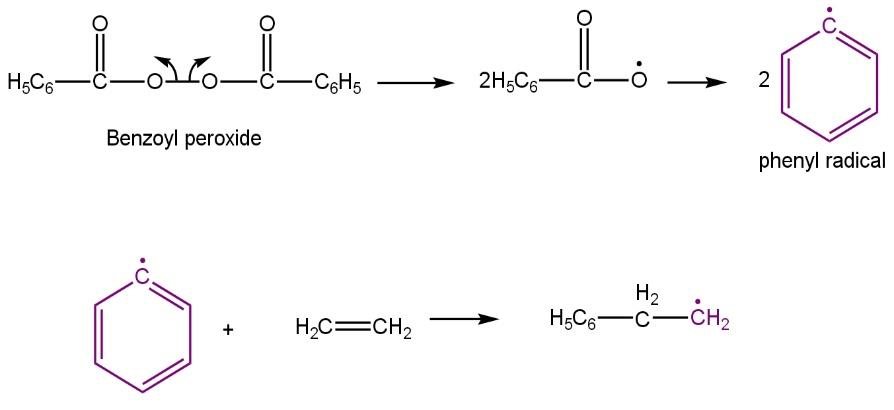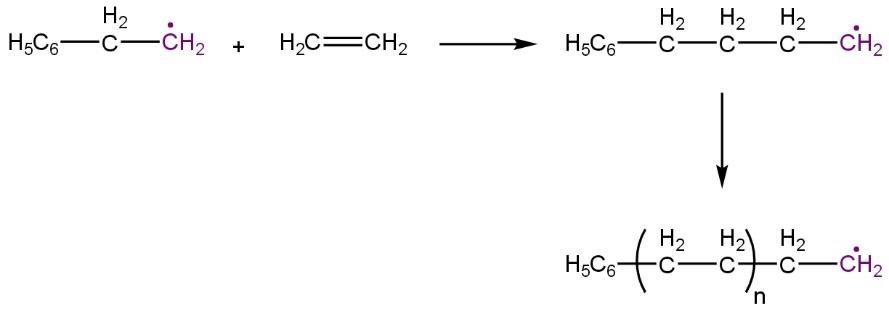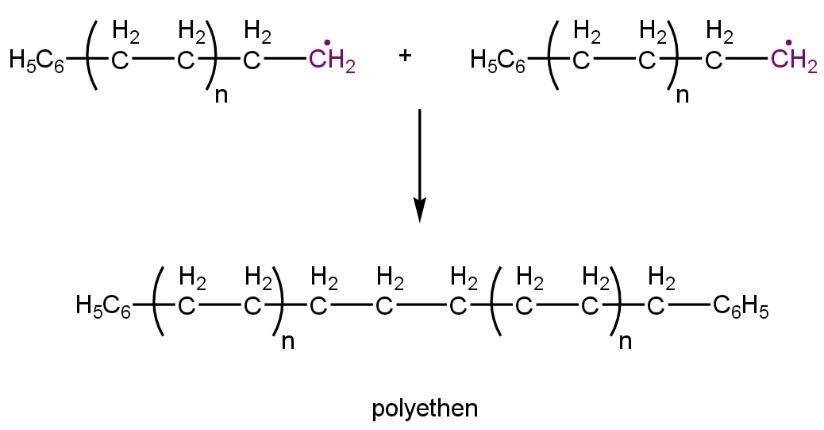
Which of the following is an addition polymer?
A Glucose
B Polyethylene
C Ethylene
D Terylene
Answer
219k+ views
Hint: Polymers, which are formed by adding the smallest unit, monomer molecule (containing double or triple bond) again and again in some pattern is known as addition polymer. Addition polymer generated through addition reaction in the presence of free radical followed by three steps, free radical initiation chain proportion, and termination of the chain. In addition to polymerization, there is no co-generation of another product and reactions take place between unsaturated bonds of monomers, unlike condensation polymers.
Complete Step by Step Solution:
Glucose: Glucose is a monosaccharide (carbohydrate) which combine with other carbohydrates during polymerization reaction to give starch and water (different product). Condensation polymerization cause monosaccharide’s conversion to products such as polysaccharides and water. As it is co-generating water during polymerization thus, glucose polymer (glucans) is not an addition polymer.
Ethylene is itself a monomer of polyethylene, which on combining repeatedly give polyethylene (polyethylene) and no other co-product. Thus, polyethylene is a addition polymer where a large number of ethylene join with a carbon-carbon double bond during polymerization in the presence of a free radical such as
Free radical initiation:

Chain propagation:

Chain termination:

Whereas terylene is also a condensation polymer that is formed when ethylene glycol reacts with terephthalate acid during polymerization releasing out water (co-generate another product) and oxygen and carbon compounds.
Note: Polymerization is generally of two types, addition polymerization in which monomers (unsaturation) are simply joined together so that the resulting polymer contains only atoms from which it is formed which is not the case in condensation polymerization.
Complete Step by Step Solution:
Glucose: Glucose is a monosaccharide (carbohydrate) which combine with other carbohydrates during polymerization reaction to give starch and water (different product). Condensation polymerization cause monosaccharide’s conversion to products such as polysaccharides and water. As it is co-generating water during polymerization thus, glucose polymer (glucans) is not an addition polymer.
Ethylene is itself a monomer of polyethylene, which on combining repeatedly give polyethylene (polyethylene) and no other co-product. Thus, polyethylene is a addition polymer where a large number of ethylene join with a carbon-carbon double bond during polymerization in the presence of a free radical such as
Free radical initiation:

Chain propagation:

Chain termination:

Whereas terylene is also a condensation polymer that is formed when ethylene glycol reacts with terephthalate acid during polymerization releasing out water (co-generate another product) and oxygen and carbon compounds.
Note: Polymerization is generally of two types, addition polymerization in which monomers (unsaturation) are simply joined together so that the resulting polymer contains only atoms from which it is formed which is not the case in condensation polymerization.
Recently Updated Pages
Is PPh3 a strong ligand class 12 chemistry JEE_Main

Full name of DDT is A 111trichloro22bispchlorophenyl class 12 chemistry JEE_Main

Sodium acetate on heating with soda lime produce A class 12 chemistry JEE_Main

Find the isoelectric point pI of Lysine A 556 B 974 class 12 chemistry JEE_Main

The order of basicity among the following compounds class 12 chemistry JEE_Main

The number of isomers in C4H10O are a7 b8 c6 d5 class 12 chemistry JEE_Main

Trending doubts
JEE Main 2026: Application Form Open, Exam Dates, Syllabus, Eligibility & Question Papers

Derivation of Equation of Trajectory Explained for Students

Hybridisation in Chemistry – Concept, Types & Applications

Understanding the Angle of Deviation in a Prism

Understanding Collisions: Types and Examples for Students

Understanding Atomic Structure for Beginners

Other Pages
NCERT Solutions For Class 12 Chemistry Chapter 1 Solutions - 2025-26

NCERT Solutions for Class 12 Chemistry Chapter Chapter 7 Alcohol Phenol and Ether

NCERT Solutions ForClass 12 Chemistry Chapter Chapter 8 Aldehydes Ketones And Carboxylic Acids

JEE Advanced Marks vs Ranks 2025: Understanding Category-wise Qualifying Marks and Previous Year Cut-offs

Haloalkanes and Haloarenes Class 12 Chemistry Chapter 6 CBSE Notes - 2025-26

Solutions Class 12 Chemistry Chapter 1 CBSE Notes - 2025-26




